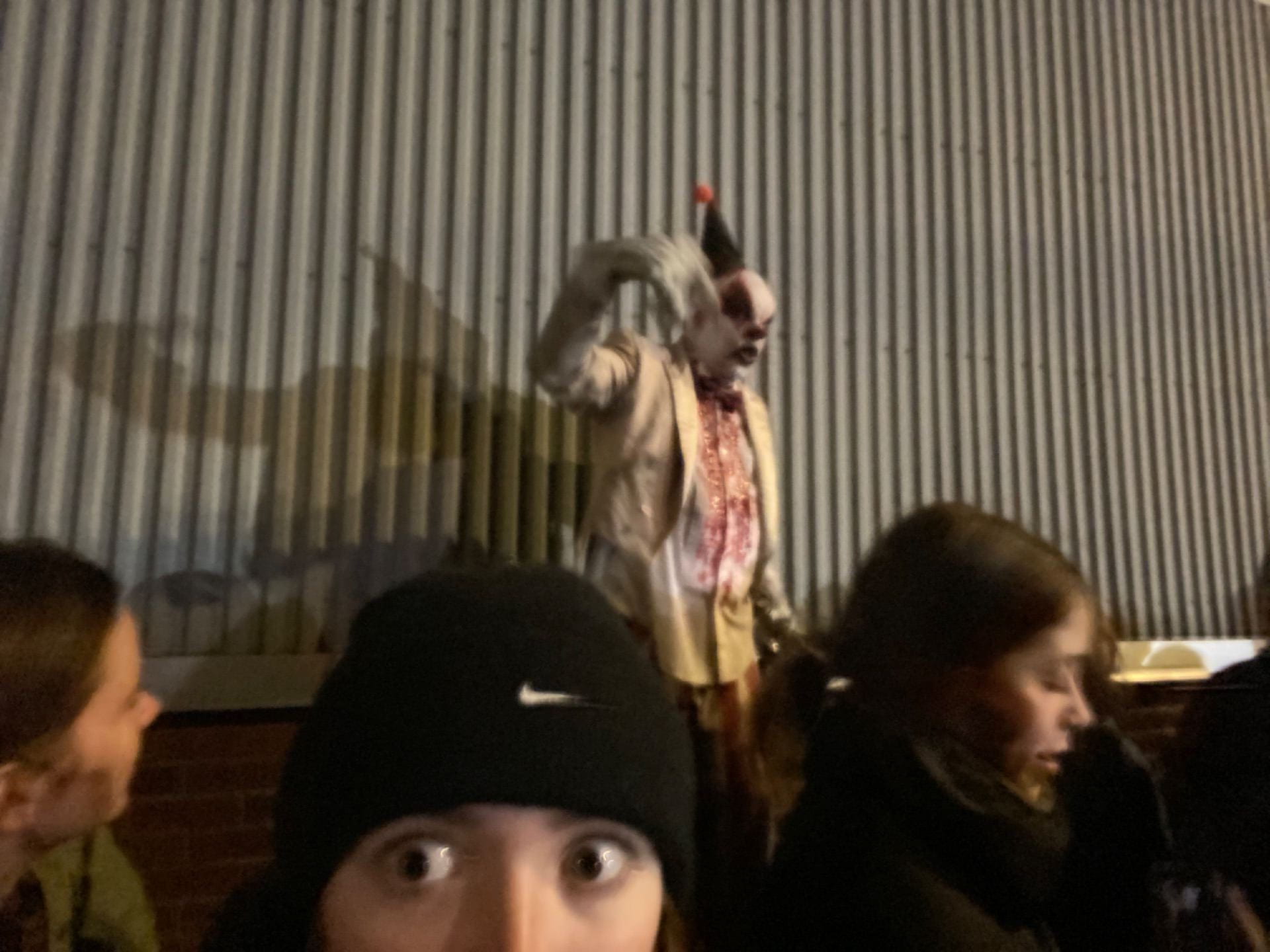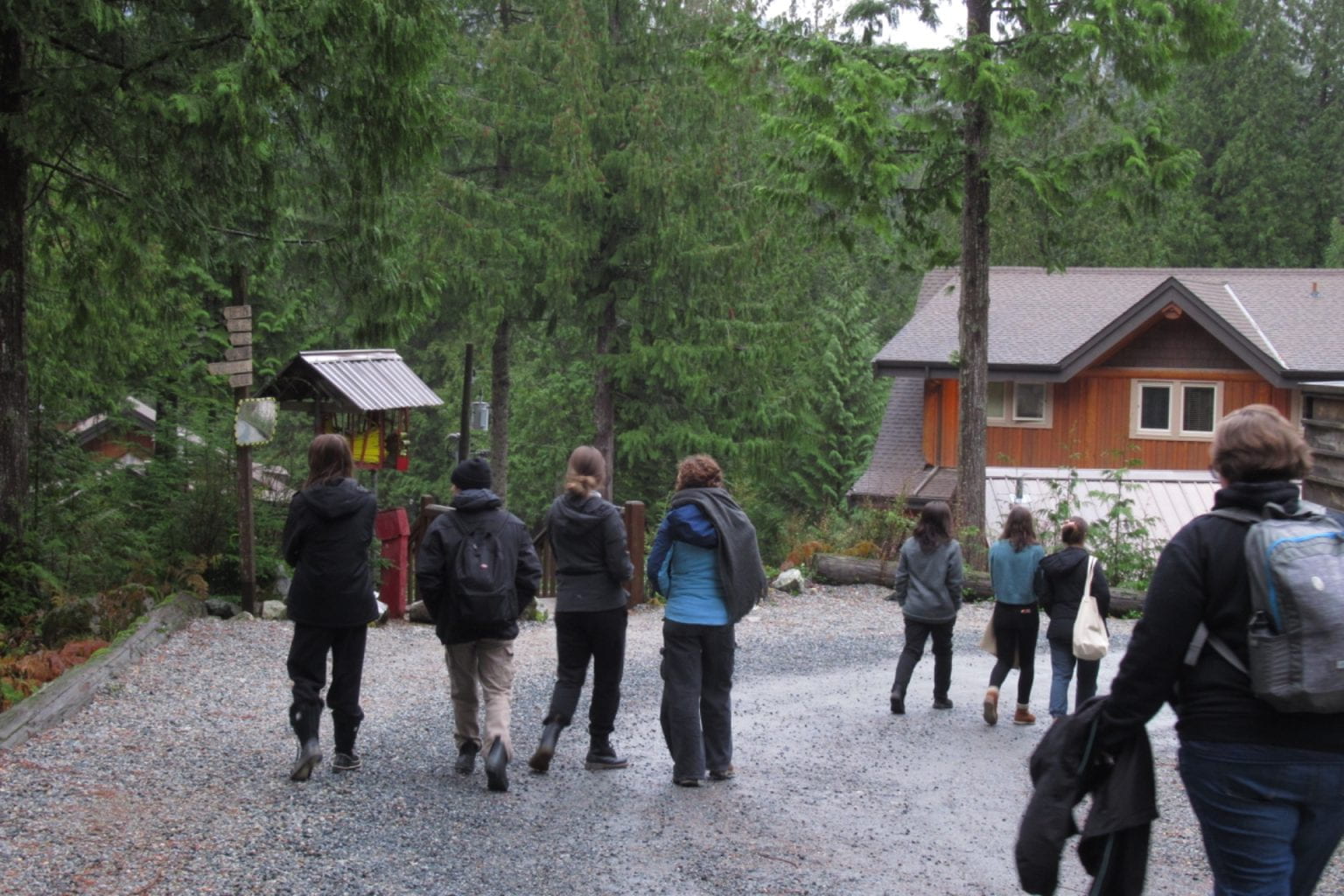
Fear is at the heart of almost everything we do. Nearly every action we take or thought we conceive either stems from or is followed by a sense of fear. Fear is an innate human trait, similar to fight or flight. Often it takes a variety of forms, unique to the individual. However there are certain fears shared among the masses. Horrific fears, the type that resonate deep within the mind and will eat at you constantly for the foreseeable future. Death, darkness, the unknown, fears that underpin horror. Though all of this is true and we are made aware of fear from infancy, humans are odd. We often temper with our fears, perhaps due to the idea that facing them will fix them. I don’t believe in that logic in regards to the real fears, not the superficial snakes and spiders. As we mingle with our fears, we try our best to reflect them through art and media. Thus, the horror genre takes the stage.
Seattle’s Museum of Pop Culture (MoPOP), graced PLP 12 with its bright and forward architecture, and more importantly its eerie display of horror. During our time in the museum, we attended a short lecture discussing the importance of reflection in art. “This Machine Kills Fascists,” the words carved into Woody Guthrie’s guitar. Admittedly I hadn’t a clue who Woody Guthrie was until this lecture, I did however know who Tupac and Run DMC were. These were just three examples of artists who convey meaningful and powerful messages through their music. They used their medium to explain their interpretations of societal issues, creating compelling and lasting works with strong reflective qualities still relative today. Following our lecture, we discovered the jewel of the museum. Throughout the display of monsters and killers and even dead bodies, precious information foundational to my understanding of the genre could be found. I could go on and on about this exhibit, I absolutely loved everything it had to offer. My grasp on horror was loose going into this project, having had no prior knowledge to pull on. MoPOP provided the opportunity to become well versed in the genre. The most impactful and valuable takeaways I obtained can be boiled down to the meat and bones of the horror genre. I listened to the creators of some of the most influential and well known horror films explain the ideas and the means of their work. Things like the story arc or chaos of a nightmare, what are it’s main components, why is it scary? Or, how spirituality isn’t always positive because fear itself is spiritual. Last but not least the two kinds of evil, the one we can run from and the one we can’t. Each of the anecdotes and all of the wisdom I took in at the exhibit changed the trajectory of my thinking throughout the remainder of the project, making for a more sophisticated understanding of the value of the genre to society.
After our experience in Seattle we returned home with a large task at hand. To demonstrate that we can experience and understand the genre more deeply than commercialized scary movies, it was only right to create our own horror. As the director of Canceled, the soon to be released short film by PLP 12, I had to execute a horrific vision. Our story follows most of the general genre rules. Classic tropes, a particular type of villain, and a quaint and unnerving setting. In my role I had so much creative control and not enough confidence or gusto to hammer things down the way I had in my head. I was far too passive and even ill prepared. Not in not knowing my plan, story, or shots, but rather in being naive at how tedious the filmmaking process is. My producer and I worked closely and I felt we were always on the same page, although we didn’t do the best job at conveying what we had discussed or planned together to the rest of our cast and crew. I found it interesting that I was even told to be more bossy. My younger self wouldn’t believe I didn’t reign with an iron fist on this one. On the bright side, I stepped far outside my comfort zone with my role and in doing so I gained much experience. My vision for this film was classic slasher. Teenagers stranded, blood, gore, and all. While I feel we accomplished the aesthetic of what I desired, the most prominent difficulty was in making this movie scary. Even after everything I learned in Seattle and after watching some classic horror films (Halloween, and Friday the 13th), it was still incredibly difficult to make people feel scared.


In my most recent post on horror I touched on how William Friedkin, director of The Exorcist said, “I made the film as a believer.” In learning of his beliefs, combined with my prior knowledge from MoPOP, I came to the conclusion that it is incredibly difficult to create a scary horror film when you don’t believe in or fear the horror you portray. This thought ties in with our driving question; “Why is horror an effective way to reflect and comment on our society?” We don’t find fear in snakes for them just being snakes. The fear comes from knowing the capabilities of an entity we cannot control. Horror is a tool often used to reflect the chasmic, immeasurable fears of the world we live in. Jordan Peele’s Get Out is a prime example. The film’s core theme is race. The director having lived the life of an African American man in the United States allows him to pull on his personal experiences to provoke fear in his target audience. Returning to The Exorcist, William Friedkin as well as the original author William Blatty are both Christians and very secure in their beliefs. The two created what is regarded as the greatest horror film of all time. A creator’s ability to know their audience and fear what they reflect in their art is what makes horror such a brilliant vessel for societal commentary.
Our horror story was based on the harmful effects of social media and cancel culture in modern society, especially among young audiences. The issue at its root was that I, and honestly nobody had a clue on how to integrate and balance our social commentary with our fear factors. I found it difficult to find the medium and ended up far too deep in the characters and yet somehow not deep enough. I admire Jordan Peele for how well established Get Out is in regards to characters and social commentary. Although I’m even more impressed with how he managed to keep hold of the classic horror tactics, the jump scares, the violence, the noise. Horror is an escape from the harsh realities we face on the daily, yet it has the ability to convey the messages we know but often refuse to acknowledge. You can argue that any genre can comment on society, and I’d wholeheartedly agree. However the undisputed beauty of horror is that in order to do so, it preys on the most widely shared and primal human trait. Fear.










